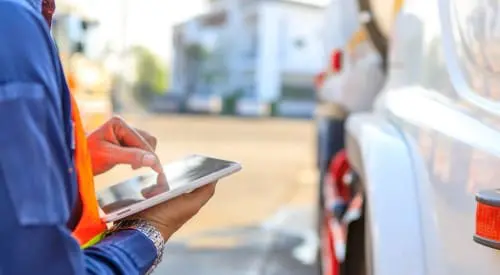
Citizens’ band radios (CBs) were once all the rage in the 1970s trucking industry. The handy communications device truck drivers once used to stay in touch with each other on long cross-country trips became a sudden trend. This was thanks to a popular culture that romanticized the stoic trucker and the freedom of the road. Hit songs such as “Convoy,” blockbuster movies like “Smokey and the Bandit” and TV shows such as “Movin’ On” fueled the hype. Regular folks began buying the sets and installing them in their cars and pickups. They dreamed of being Burt Reynolds and Jerry Reed trying to evade Sheriff Buford Justice and make the big delivery on time.
What many a daydreamer didn’t realize is that being a trucker is more than “Eastbound and Down.” It’s a hard life spent on lonely highways and in greasy diners, far from family and friends. Being a trucker takes a special breed, one that becomes accustomed to the hours of service it takes for their long hauls. This adds to truckers’ near-mythical standard in modern American culture and leads to instant understanding and camaraderie amongst their select group.
Today, the CB radio fad has long since faded. Few of the would-be Bandits of the ‘70s remember their long ago “handles” or what “10-100” even meant. But truckers still go on riding the highways, just not quite as they did in 1976 at the height of the CB craze. Lots of new rules and regulations govern the amount of time they can be behind the wheel. A driver shortage has helped lift their pay as demand for truckers exceeds supply. That’s not the only thing that’s made a trucker’s life easier today than when “Breaker, Breaker” was showing in theaters. Digital technology has turned a generation of highway jockeys into Web surfers and app junkies, and that’s been a big boon for everyone.
A trucker spends a lot of time in the cab. Innovations, new technology, and applications can now turn that cab from a place to not only control the vehicle but to also run an office. Things that once had to be done by hand or manually back at headquarters – such as logs, trip sheets, delivery reports, etc. – can now be more effectively handled directly from the truck itself by the driver. Many of these devices operate via voice command, ensuring the driver can keep his or her eyes on the road and hands on the wheel.
Apps boost driver safety in other ways. Phone and Web apps enable drivers to quickly alert the main office of truck problems, show where to get help when needed, and provide diagnostic information to speed any repairs. Other truck-mounted electronic devices relay vital safety information to the driver, such as cameras, sensors, blind-spot warning and collision avoidance systems.
Data drives the trucking business today as much as Peterbilt or Mack. Thanks to digital technology, artificial intelligence and specialized programs, truckers can quickly determine how to make each delivery more efficient and productive. GPS trackers monitor rig locations, making dispatching easier and timelier than before. Such technology especially aids the small, independent trucker, making them more competitive with the big carriers in a way never possible before. The more efficient their operations, the better they can cut down on waste and boost their bottom line.
Finally, digital technology has aided truckers and trucking companies in recruitment and retention of employees. In an era of driver shortages, the last thing a carrier big or small needs is to not have personnel available to make deliveries. This costs the company money and potential future business. Apps have been developed that function like job boards once did at interstate truck jobs. This gives drivers instant information on what loads are out there and who is hiring. Cledus Snow depended on Bandit and his Trans Am driving far in front as blocker, and CB radio for key information on his run from Texarkana to Georgia. Today’s trucker, meanwhile, has an array of electronic and digital tools at his or her fingertips that can indicate where the next truck stop is located, the truck’s fuel efficiency, tire pressure and how many hours have been logged. Whether eastbound and down, westbound or any direction in between, it’s a new, better road from the 21st century trucker.
- What is an Invoice Factoring Broker? - July 17, 2022
- 7 Tips for Buying Out a Business Partner or Majority Owner - May 13, 2022
- 6 Leadership Secrets Every Small Business Owner Should Know - December 9, 2021

